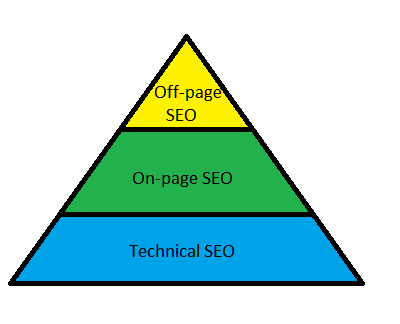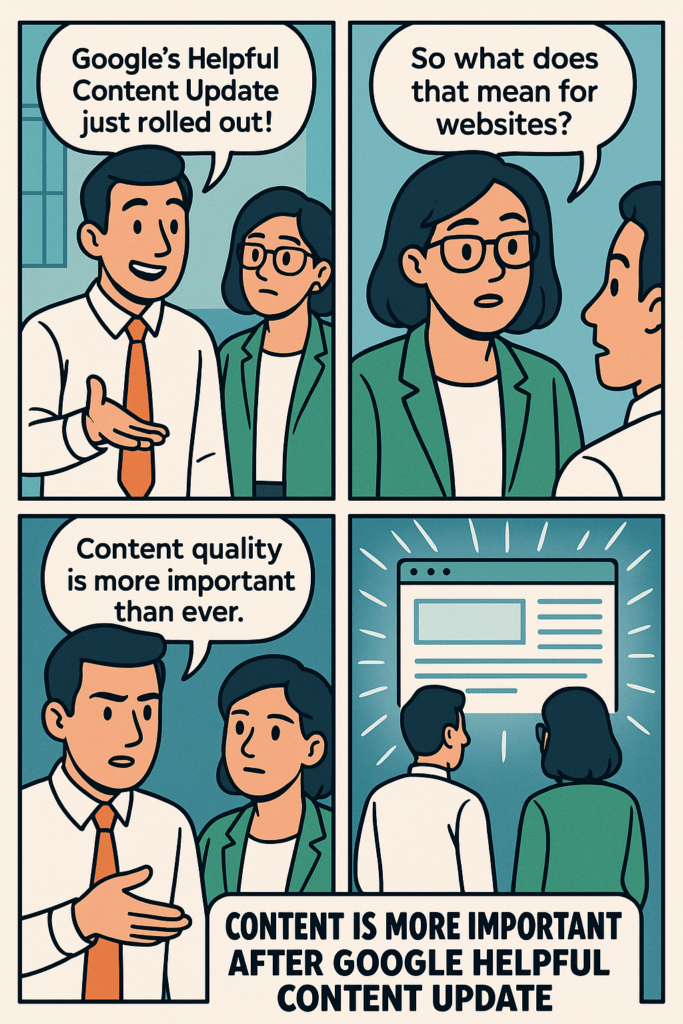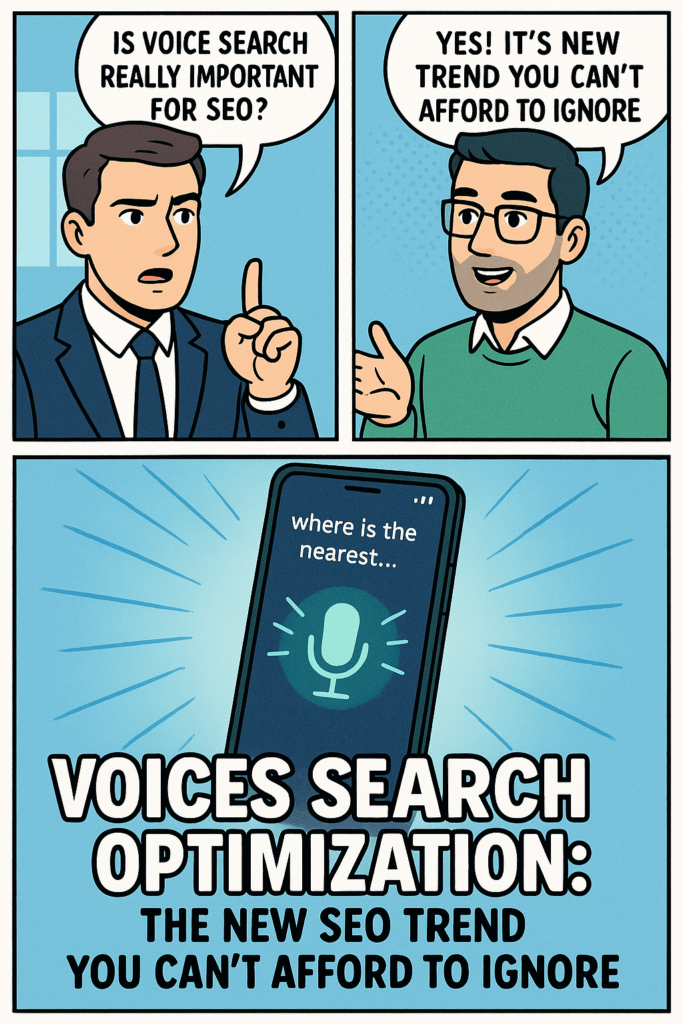SEO
Google Releases ‘Trial Runs’ Streaming App Ads
In the dynamic world of digital advertising, innovation is the key to capturing user attention and achieving marketing success. Google’s recent release of ‘Trial Runs’ streaming app ads marks a groundbreaking shift in app marketing strategies. This essay dives into the intricacies of this innovative approach, analyzing its impact on user engagement, app adoption, and the broader landscape of digital advertising.
The Power of Streaming App Ads
1. Redefining Engagement: Streaming app ads allow users to experience the app’s functionality in real-time, breaking down barriers and enhancing engagement.
2. Interactive Previews: ‘Trial Runs’ offer interactive previews of apps, giving users a taste of the experience before downloading.
Introducing Google’s ‘Trial Runs’ Streaming App Ads
1. In-App Streaming: ‘Trial Runs’ leverage Google’s cloud-based technology to stream apps in real-time, eliminating the need for downloads.
2. Seamless Interaction: Users can interact with the app during the streaming experience, exploring its features and functionality.
The Value Proposition for Advertisers
1. Enhanced Engagement Metrics: Streaming app ads provide advertisers with more accurate engagement metrics, including time spent within the app.
2. Quality Leads: Users who experience the app’s functionality before download are more likely to convert, resulting in higher-quality leads.
Empowering Users: A User-Centric Approach
1. Empowering Decision-Making: ‘Trial Runs’ empower users to make informed decisions about app downloads by offering a firsthand experience.
2. Reducing App Abandonment: Users who engage with the app’s features are more likely to continue using it after download, reducing app abandonment rates.
Streamlining User Acquisition: The Impact on App Adoption
1. Lowering Barriers: Traditional app downloads can be cumbersome. ‘Trial Runs’ streamline the acquisition process, potentially boosting app adoption rates.
2. Reducing Uninstalls: Users who have interacted with the app are more likely to find value in it, leading to fewer uninstalls after download.
Analyzing the Advertiser-User Relationship
1. Interactive Engagement: ‘Trial Runs’ foster an interactive relationship between advertisers and users, allowing for a more personalized experience.
2. Real-Time Feedback: Users’ real-time interactions with the app during streaming provide valuable feedback to advertisers for further improvements.
Innovation vs. Privacy Concerns: Balancing the Equation
1. Data Privacy: While ‘Trial Runs’ offer enhanced user engagement, concerns about data privacy and permissions need to be addressed.
2. Informed Consent: Users should be informed about the data collection process during streaming and given the option to opt in or out.
The Broader Implications: Shaping the Future of Digital Advertising
1. Transforming User Experience: Streaming app ads signify a shift toward more immersive and interactive user experiences in advertising.
2. Competitive Edge: Advertisers adopting innovative approaches like ‘Trial Runs’ gain a competitive edge by offering unique value to users.
Ethical Considerations and Transparency
1. Transparent Communication: Advertisers must clearly communicate the streaming nature of the ad and the data collection process to users.
2. User Empowerment: Users should have control over the amount of data shared during the streaming experience, ensuring their consent is respected.
Google’s introduction of ‘Trial Runs’ streaming app ads represents a transformative leap in app marketing, reshaping user engagement, acquisition strategies, and the way we perceive digital advertising. By empowering users to experience apps firsthand and offering advertisers more valuable insights, ‘Trial Runs’ pave the way for a future of more immersive, interactive, and user-centric advertising experiences. However, the balance between innovation and privacy considerations is paramount, requiring transparency, informed consent, and ethical practices to ensure that the evolution of digital advertising benefits all stakeholders involved.
Google Ads Photo Guidelines Now Faster Reviews & More Creative
Google Local Service Ads play a vital role in connecting businesses with local customers. Recent updates to the platform’s photo guidelines have brought about improvements that impact reviews, creativity, and overall efficiency. This essay aims to explore these updates and their implications for businesses, customers, and the local service ecosystem.
Google Local Service Ads: A Brief Overview
1. Connecting Local Businesses: Google Local Service Ads enable local businesses to reach potential customers through targeted ads displayed in search results.
2. Service Verification: Google verifies businesses to ensure they provide high-quality services and meet customer expectations.
Recent Photo Guideline Updates
1. Enhancing Visual Content: The updates aim to improve the visual representation of businesses’ services, fostering better communication with potential customers.
2. Faster Reviews: These updates also expedite the review process by encouraging businesses to upload relevant photos that showcase their services.
Implications for Businesses
1. Improved Credibility: High-quality photos increase the credibility of businesses, allowing customers to visualize the offered services and facilities.
2. Customer Engagement: Engaging photos provide potential customers with a glimpse of what to expect, enticing them to choose a particular business.
3. Enhanced Conversion: Eye-catching visuals can lead to higher click-through rates, driving more conversions for businesses.
Benefits for Customers
1. Informed Decisions: High-quality images help customers make informed decisions about the services they are seeking.
2. Visual Transparency: Visual representations of businesses’ offerings promote transparency and help customers avoid surprises.
3. Streamlined Selection: With a clearer understanding of services, customers can quickly narrow down their choices.
Promoting Creativity and Uniqueness
1. Showcasing Uniqueness: Businesses can use images to highlight their unique selling points and stand out from the competition.
2. Enhancing Brand Identity: Creative visuals contribute to building a strong brand identity, which resonates with customers.
Accelerated Review Process
1. Quick Visual Feedback: With relevant photos, customers can quickly assess a business’s suitability, expediting the decision-making process.
2. Review Authenticity: Authentic photos enhance the reliability of reviews, as customers can visualize the experiences of others.
Best Practices for Businesses
1. High-Quality Images: Clear and high-resolution photos offer the best representation of services.
2. Variety: Businesses should include a variety of images that capture different aspects of their services.
3. Relevance: Photos should accurately depict the business’s offerings and facilities.
The recent updates to Google Local Service Ads’ photo guidelines mark a significant step forward in enhancing the user experience for both businesses and customers. These updates not only improve the efficiency of the review process but also allow businesses to showcase their offerings more creatively and authentically. Through the power of visuals, local businesses can engage customers, build trust, and drive conversions. As the digital landscape continues to evolve, these updates stand as a testament to Google’s commitment to fostering meaningful connections between local businesses and their customers.
Contents more important after google helpful content update
SEOs (Search Engine Optimizers) might employ in preparing for upcoming Google algorithm updates that prioritize helpful and valuable content. Google frequently updates its search algorithms to provide users with the most relevant and high-quality content. If SEOs can anticipate these updates and align their strategies accordingly, they can potentially benefit from improved search engine rankings and visibility.
Here’s how SEOs might approach preparing for a Google update that prioritizes helpful content:
- Content Quality: Focus on creating high-quality content that addresses user needs, provides valuable insights, and offers practical solutions. Content should be well-researched, authoritative, and written in a user-friendly manner.
- User Intent: Understand user intent behind search queries and tailor content to fulfill those intentions. Google’s updates often aim to better understand context and user expectations.
- Long-Form Content: Longer articles and comprehensive guides can provide in-depth information, which might align well with Google’s emphasis on delivering thorough and informative content.
- Structured Content: Organize content using headings, bullet points, and other formatting to make it easy for users to scan and find relevant information quickly.
- Multimedia: Enhance content with relevant images, infographics, videos, and other multimedia elements to engage users and convey information more effectively.
- Expertise and Authority: Showcase expertise in your field by providing accurate and trustworthy information. Establish authoritativeness by citing reputable sources and linking to authoritative sites.
- Mobile-Friendly: Ensure that your content is responsive and optimized for mobile devices, as Google considers mobile-friendliness a ranking factor.
- Page Speed: Optimize your website’s load times to enhance user experience and align with Google’s user-centric approach.
- User Engagement Metrics: Encourage user engagement with your content by promoting social sharing, comments, and interactions. Higher user engagement can signal to Google that your content is valuable and relevant.
- Technical SEO: Address technical issues that could affect user experience, such as broken links, duplicate content, and crawl errors.
- Update Existing Content: Regularly update and refresh existing content to ensure its accuracy and relevance.
It’s important to note that while preparing for Google updates is a valid strategy, the core principle should always be providing genuine value to users. Google’s updates are designed to reward websites that prioritize user satisfaction. SEOs who focus on creating helpful and informative content are more likely to benefit from algorithm updates in the long run.
Remember that the SEO landscape is constantly evolving, and staying informed about industry trends and Google’s guidelines is essential for long-term success.
I
Voice Search Optimization: The New SEO Trend You Can’t Afford to Ignore
Voice search optimization is a new SEO trend that emphasizes optimizing for online search queries that are made using voice rather than traditional keyboard and mouse inputs. Voice search is quickly becoming the preferred method for searching online, with the percentage of users using voice search growing exponentially year over year. Voice search optimization is quite different from traditional SEO because it requires an understanding of natural language processing techniques. As opposed to traditional search, voice search is typically more conversational and often includes question-based queries. Since individuals are more likely to use natural sounding keywords and phrases when asking questions, it’s important to use language that matches the way people actually speak. This means that instead of including long-tail keywords within a webpage’s content, companies should focus more on optimizing for natural language. In addition to adjusting to the language that people use in their voice searches, companies also need to be aware of the different context in which users are asking their questions.

For example, when users are searching via voice, they’re often looking for a direct answer rather than a list of websites to explore. Optimizing content accordingly by structuring pages in such a way that a succinct answer can be provided is key. Furthermore, businesses need to ensure that their content is findable via voice-activated assistants, such as Amazon’s Alexa, and Apple’s Siri. To do this, businesses need to make sure their website is mobile-friendly and optimized for local searches, so that the assistant can identify the relevant results. Finally, businesses should consider the fact that voice search results are more likely to feature snippets from websites, and therefore optimizing content for features such as featured snippets will be invaluable. Strategies such as using structured data and schema markup can dramatically improve a website’s chances of appearing in voice search results. In summary, voice search optimization is an important new SEO trend that businesses need to pay attention to if they want to remain competitive. Formulating strategies to accommodate natural language and structured data will be key in achieving a successful voice search optimization strategy.
Voice search is no longer a futuristic concept—it’s here, and it’s transforming how users find information online. With the rise of smart speakers, voice assistants, and mobile voice search, businesses must optimize their websites to stay competitive. Ignoring this trend could mean missing out on a large share of search traffic.
1. Why Voice Search Matters
More than 50% of mobile searches are voice-based.
Smart assistants such as Google Assistant, Siri, and Alexa are now a main method individuals engage with search.
Voice searches are more conversational and longer in nature compared to typed searches.
2. Optimize for Conversational Keywords
Traditional SEO is keyword-centric. With voice, users speak full questions. Example: rather than search “best pizza NYC”, they may search “Where can I get the best pizza in New York City?”
3. Optimize for Featured Snippets
Most voice assistants take answers from featured snippets. You can enhance your chances by formatting your content with proper headings, brief answers, and schema markup.
4. Optimize Local SEO
Most voice searches are location-based. Example: “Find a dentist near me”. Make sure your business listings, Google Business Profile, and NAP (Name, Address, Phone number) are accurate.
5. Site Speed and Mobile Optimization
Voice searches tend to take place on mobile devices. Quickly loading, mobile-optimized websites are needed to rank for voice queries.
Expert-Backed SEO Strategies to Dominate the Ecommerce Market
Ecommerce has revolutionized the way consumers buy and sell goods and services around the world. As a result, ecommerce businesses need to stay competitive by leveraging the latest SEO techniques to stay on top of the competition. To do that, it is important to understand the underlying principles of SEO that will help you dominate the ecommerce market. One of the most important strategies to help your ecommerce business become more visible online is to optimize your website with relevant keywords and phrases. This will ensure that your site appears at the top of search engine result pages when someone searches for ecommerce related terms. It is also important to create content that people will find valuable, as this will further encourage them to click through to your website. Content should be targeted towards the specific needs of your target audience and provide users with interesting and informative information regarding your products and services. Another important SEO strategy to help you dominate the ecommerce market is to create internal links from within your website.

This will help search engine crawlers navigate your website more efficiently and make it easier for customers to reach your page. Additionally, you should optimize the titles and descriptions of your webpages for better visibility. This is done by choosing relevant keywords and phrases that will accurately describe the contents of the page. Finally, it is important to regularly monitor and analyze your website’s performance. This will give you insight into what works and what needs improvement. Additionally, you should use tools like Google Analytics, Ahrefs, and Semrush to track the performance of your website, as well as to keep track of your competitors. By staying up to date with the latest SEO trends and tactics you can stay ahead of the competition and dominate the ecommerce market. By utilizing the right SEO strategies, ecommerce businesses can increase their visibility and profitability. However, because the industry is constantly changing, it is important to stay abreast of the latest developments in SEO to remain competitive. By doing so, you will have a much better chance of dominating the ecommerce market and capturing the attention of potential customers.
How To Be Efficient With SEO Budget During Downtimes
SEO budgets can be a major concern during times of economic downturn or reduced marketing spend. To remain efficient with your SEO budget, it is important to recognize that you don’t need to stop investing money altogether, but rather shift your focus to cost-effective measures that can still yield positive results. Here are some tips for being efficient with your SEO budget during downtimes:
1. Audit your existing efforts: Conduct an SEO audit of your website to see where you are already investing in SEO and where you can make improvements. Identifying any areas of waste or inefficiency can allow you to adjust and eliminate any unnecessary expenses.
2. Review keyword targeting: Make sure that you are targeting the correct keywords for the search terms you want to rank for. Reviews of keyword data can provide insights into which terms are yielding the most potential returns and can help you identify potential budget savings.
3. Modify site content: Make sure that you are regularly updating and optimizing your site content. Evaluating existing content through usability testing and analytics can provide greater insight into how visitors use your site and what content is most important to them.

4. Utilize your resources: Utilizing existing resources can help you save on excessive outsourcing costs. Investing in SEO training and education for your team can enable them to make efficient, informed decisions that can save your budget in the long-term.
5. Prioritize campaigns: Assess your existing campaigns and prioritize which ones need the most attention. This will allow you to allocate your resources to the most important campaigns first, ensuring that you are investing your budget where it can yield the greatest ROI.
6. Trend analysis: Use trend analysis to better understand how your keywords and search engine results are shifting over time, as this can help you anticipate future changes in the market and adjust your budget accordingly.
By implementing these tips for efficient budgeting during downtimes, you can make sure that you are still investing in SEO but doing so in a way that ensures maximum ROI. Employing a mix of effective cost-saving measures and strategic investments can help keep your SEO efforts on track while navigating uncertain times.
Why next year’s SEO results depend on your SEO work this year
Search engine optimization (SEO) is a complex and evolving field with the goal of optimizing content and website architecture in order to capitalize on a website’s presence in the organic search engine results pages (SERPs). SEO practitioners employ a variety of techniques designed to keep websites appropriately ranked against other relevant sites for key search queries and keyword phrases. The success of any SEO campaign is measured through the amount of organic traffic it drives to the website, and the higher the ranking for a website, the more visibility it will receive in the SERP. The success of one year’s SEO efforts is highly dependent upon the efforts put in place in the previous year. Prior SEO optimization strategies, if properly implemented, have a direct and lasting impact on the future success of the website in the search engine rankings and the corresponding organic traffic it is able to generate. This relationship between previous and current SEO efforts carries over from year to year, and for that reason, a comprehensive and consistent SEO strategy is essential for achieving optimal SEO results in the long-term. One of the reasons for the correlation between SEO results from one year to the next is that search engine algorithms, while constantly changing, always take into account the backlinks, indexable content, and page relevance of the website in determining rankings in the SERPs. Therefore, if a website’s SEO efforts are successful in the year prior, they will continue to be beneficial in the subsequent year. On the other hand, if a website’s SEO efforts are unsuccessful in the year prior, it may take significant resources and a great deal of time to recover the website’s rankings. The importance of building a comprehensive and ongoing SEO plan is also critical for the continued success of any website.

This is because after a certain period of time, websites often begin to suffer from diminishing returns in the SERP.This can be caused by a variety of factors, such as an overload of internal links on the page, or duplicate content. These issues can prevent a website from gaining the necessary visibility in the SERP, and can require extensive marketing efforts in order to recover. To ensure that SEO efforts are optimal and not lost to decreasing returns, websites should focus on not only the current year’s SEO efforts, but also on efforts from the previous year. Previous SEO efforts should be evaluated to ensure that they are still efficient and effective, and any areas that need to be improved should be addressed. Additionally, comprehensive SEO strategies should be adopted that involve both on-page and off-page tactics. This will help to ensure that the website stays competitive in the SERPs and maintains its organic search engine rankings over the long term. In summary, the SEO results of one year are highly dependent on the SEO efforts of the previous year. Regardless of when a website was initially launched or when it was subjected to SEO efforts, the importance of consistently optimizing for search engine visibility cannot be overstated. Website owners should take into account the past SEO efforts from the prior year when planning their current SEO strategy, and then strive to improve the website’s visibility and ranking over time. Only by creating and executing an effective long-term SEO plan can the website gain the necessary visibility and organic traffic it needs to maintain and grow its online presence.
Google Maps can detect fake phone numbers in photos and remove them
The use of Google Maps to detect fake phone numbers in photos is a recent development in technology that has made it easier to protect people’s data and privacy. By using artificial intelligence (AI) and machine learning (ML), Google Maps can detect whether the text in an image is a valid phone number or not. When a user uploads an image to Google Maps, it is analyzed for any text using special algorithms that are trained to distinguish between real and fake phone numbers. These algorithms evaluate each character of a phone number to determine its validity. For example, if a user uploads an image which contains a phone number that is missing a digit or has an additional digit, the algorithm will recognize this and throw an error message. In addition to checking for validity, algorithms are also utilized to analyze the text content of the phone number.
 Google map
Google mapIf the text contains inappropriate words or phrases, Google Maps will detect this and remove the image from its database. With this technology, Google Maps has created a web of security in which it is able to protect its users from exploitation and financial fraud. Another important aspect to consider is that the data of the phone numbers being checked is stored and encrypted. This ensures that the data is secure and inaccessible to any unwanted individuals or organizations. Google Maps also utilizes a secure certificate so that any files being uploaded remain secure and private. Overall, Google Maps’ AI and ML capabilities have allowed it to detect fake phone numbers in photos and remove them from its database. This ensures that people’s data is kept safe and secure. Additionally, it allows Google Maps users to have more control over the information and images they upload, making it easier to protect their privacy.
The SEO Hierarchy of needs for Local Businesses on a Budget
SEO, or Search Engine Optimization, is defined as the practice of optimizing a website or web page in order to improve its rankings on search engine results pages. Essentially, it seeks to ensure that web content meets the criteria that search engines use when displaying results for a given query. Local businesses on a budget will find that SEO is an essential tool for expanding their customer base and increasing profitability.
1. Keyword Research
The first step in any SEO strategy is to identify what a potential customer is searching for and what keywords they might use during the search process. This includes researching and selecting relevant keywords that will accurately reflect your offerings and are likely to get picked up by search engine algorithms when someone searches for them. Utilizing tools such as Google Trends and Search Console makes it much easier and faster to generate a substantial list of keywords.
2. On-Page SEO
On-page SEO enhances your website’s content by optimizing it for relevant keywords. This includes incorporating the chosen keywords into sections such as the title, the headings and subheadings, and the body of the content. Additionally, it’s important to use natural-sounding language and avoid keyword stuffing.
3. Technical SEO
Technical SEO deals with optimizing the code of your website and making sure that it is crawlable by search engine bots. The most important aspects of technical SEO for local businesses are ensuring that the website is mobile-friendly, site speed is optimized, and all pages have appropriate meta tags and alt-text for all images.

4. Off-Page SEO
Off-page SEO can be thought of as the activities you do externally to improve your search engine listings. This may include link building (i.e. getting other websites to link to yours), social media marketing, content promotion, influencer outreach, and more. Well-executed off-page SEO can help to establish your website as a top authority in your field.
5. Analytics and Reporting
The last piece of the puzzle is analytics and reporting. Regular monitoring of your SEO efforts using tools like Google Analytics and Search Console will enable you to track progress and make adjustments when necessary. Having a precise interpretation of the data allows you to adjust your tactics and approach in an informed way.
In conclusion, SEO is arguably the most cost-effective way for local businesses on a budget to increase visibility and generate more leads. By leveraging the five levels of SEO, you can give your business the best chance of succeeding online. With commitment and dedication, you can see tangible results over time.
SEO for multi-language websites: How to speak your customers’ language
SEO for multi-language websites is a complex and often overlooked aspect of website design and development. When optimizing for multiple languages, it is important to consider both the technical and cultural aspects involved. The technical aspects involve optimizing the website for multiple languages, while the cultural aspects involve understanding and speaking the language of the target market. The first step to optimizing for multiple languages is to ensure that the website is properly coded. This includes using the correct language codes, properly setting the language preferences for each page, and using the correct character encoding. All of these elements must be properly set in order for the website to be properly indexed by search engines. Once the technical aspects are taken care of, the next step is to create content that is tailored to the target market. This can be done by creating content that is written in the native language of the target market.

This content should include keywords and phrases that are relevant to the target market, as well as topics that are of interest to them. It is also important to ensure that all content is written in a way that is easy to understand, even if the reader is unfamiliar with the language. The final step to optimizing for multiple languages is to ensure that the website is properly linked to other websites and social media accounts in the target language. This includes setting up accounts on social media networks in the target language and using links from these accounts to direct users to the website. Additionally, links from other authoritative websites in the target language should be included to help improve the website’s visibility. By taking these steps, businesses can ensure that their website is properly optimized for multiple languages. This will help to increase visibility and website traffic, as well as improve the overall user experience for customers in the target language. Additionally, it will help to build trust and relationships with customers in the target language, which can lead to increased sales and more returning customers.
Blogroll
Categories
- 2013 seo trends
- author rank
- Bing search engine
- blogger
- Fake popularity
- Google Adsense
- google fault
- google impact
- google Investigation
- google knowledge
- Google panda
- Google penguin
- Google Plus
- Google webmaster tools
- Hummingbird algorithm
- infographics
- link building
- Mattcutts Video Transcript
- Microsoft
- MSN Live Search
- Negative SEO
- pagerank
- Paid links
- Panda and penguin timeline
- Panda Update
- Panda Update #22
- Panda Update 25
- Panda update releases 2012
- Penguin Update
- Sandbox Tool
- search engines
- SEO
- SEO cartoons comics
- seo predictions
- seo techniques
- SEO tools
- seo updates
- social bookmarking
- Social Media
- SOPA Act
- Spam
- Uncategorized
- Webmaster News
- website
- Yahoo








